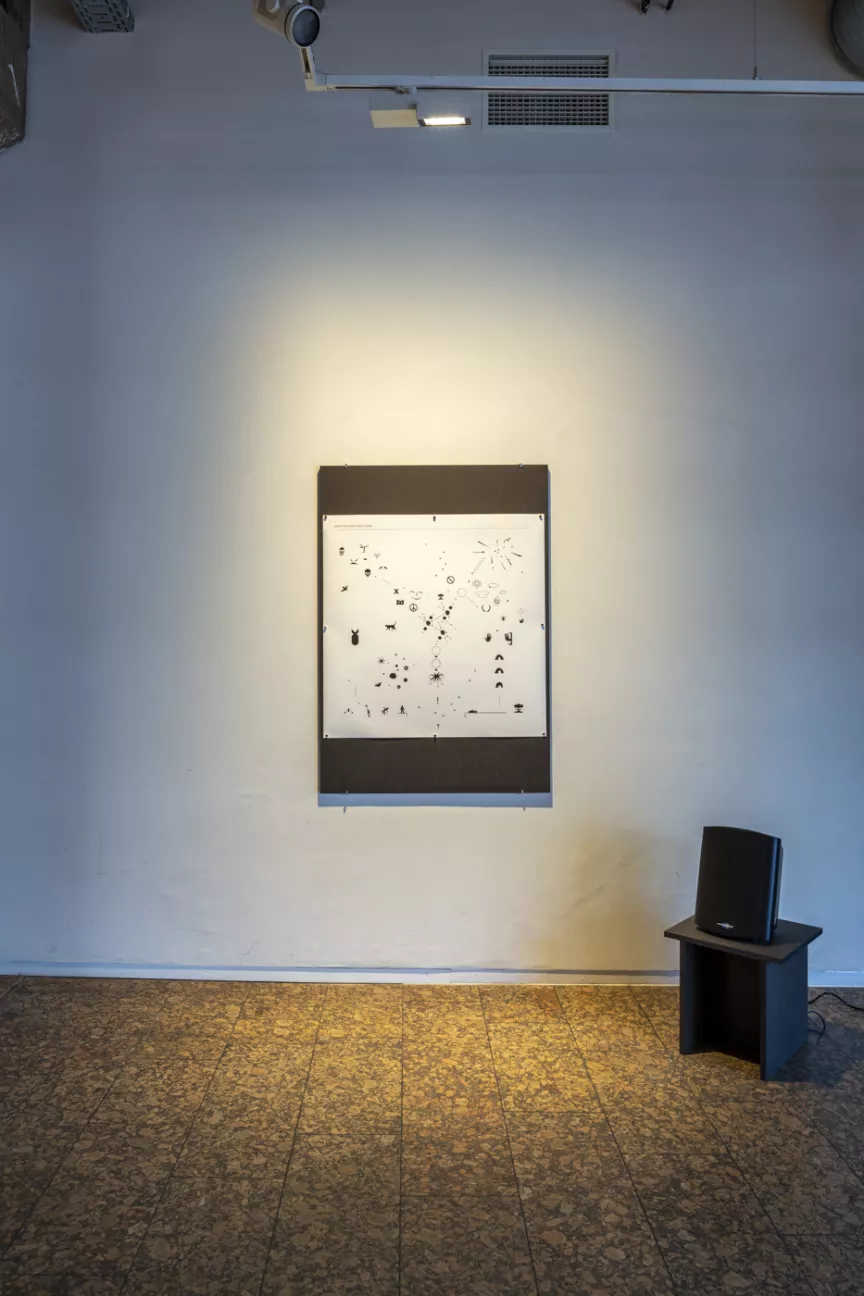Katarina Sevic

Something Man-made Is Here
Sound installation with one-channel audio and graphic score, 2024
Katarina Šević’s participation in SALT. CLAY. ROCK. is two-fold: she is the author of the project’s visual identity and has created a new work for the exhibition that draws on her research for the graphic design. Unlike other commissioned artists whose works are connected to a specific site and are thus locally embedded, Katarina’s focus is more overarching, but with a particular interest in the interdisciplinary research field of “nuclear semiotics” and the diverse visual languages connected to nuclear culture, spanning pro-nuclear advocacy, radiation warning messages, and anti-nuclear resistance. Nuclear semiotics is a particularly challenging, speculative and conceptual field as it strives to transcend the time and cultural limits of language, communication and meaning, and to confront the (im)possibility of warning future generations of human and non-human beings about the dangers of radioactive waste. This means that designs, signs or signals have to be invented that remain comprehensible for at least 100.000 years; it challenges us to "think-with" the deep time of the nuclear half-life and to imagine communication with creatures living in the far future.
In this regard, Katarina is especially interested in exploring the limits of language, meaning, and cross-species communication. She combines various visual sources (symbols and texts) gathered during her research into a graphic score (verse) that is freely interpreted by a chorus of voices. Although activated by human performers, she strives to create a more-than-human soundscape, incorporating sounds made by animals when communicating with each other, as well as the technified sounds of artificial intelligence and digital media. Fusing meaning-making and world-building, Katarina's audio work and graphic score are an exercise in imagination, and are a demonstration of conceptual thought about how we pass on information and share knowledge. She is inspired by the work of nuclear semioticians such as Thomas Sebeok, a Hungarian-born American polymath, semiotician and linguist who studied human and non-human systems of communication. He proposed incorporating myth and ritual, as a "folkloric relay system" and the establishment of an "atomic priesthood," as a vehicle for social transfer across time. Other semioticians considered genetically engineered species that could function as "living radiator detectors" for transmitting messages about radiation’s hazards. The philosophers Françoise Bastide and Paolo Fabbri coined the idea of a "ray cat" and suggested that a particular animal species might be engineered that would change color in proximity to radioactive sites.
While the nuclear project promises almost limitless energy, it immediately comes up against the limits of our security and communication tools. Low- and medium-level radioactive waste repositories are already in operation around the world, but the means of communicating their dangers to the future are yet to be invented. Concurrently, there are still no technical means to permanently protect us from its potential hazards. These tensions and complexities are what Katarina addresses in her work, moving between the need for communicative clarity around nuclear issues—its dangers and its power—and the unfathomable questions of deep time and future life. Her sound piece becomes an uncanny "earworm" for the exhibition, resonating with the nuclear pasts and radiant futures that SALT. CLAY. ROCK. deals with.

KATARINA ŠEVIĆ is an artist born in Novi Sad, Yugoslavia/Serbia. She studied at the Intermedia Department of the University of Fine Arts in Budapest and lives in Berlin.
Through her artistic practice and design projects she orchestrates texts, books, artifacts, locations and archival documents in order to investigate and reframe established canons and prevalent historical narratives and their relationship to the forms of making and thinking. She works interdisciplinary, making objects, costumes and performances. She has participated in diverse collaborative projects, initiated and co-founded independent art spaces in Budapest, edited and published numerous books. https://www.katarinasevic.com/




